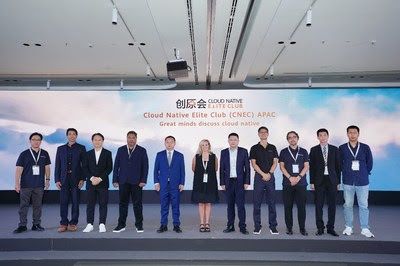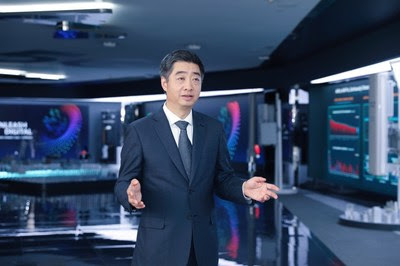BANGKOK, Sept. 19, 2022 /PRNewswire/ — HUAWEI CONNECT 2022 kicked off in Bangkok on September 19. At the Huawei Cloud Summit themed “Inspire Innovation with Everything as a Service”, Zeng Xingyun, President of Huawei Cloud APAC, William Fang, Chief Product Officer of Huawei Cloud, and customers and partners delivered keynote speeches. During the event, Huawei Cloud released the Cloud Native 2.0 Architecture White Paper and launched Cloud Native Elite Club (CNEC) APAC together with Cloud Native Computing Foundation (CNCF). To accelerate the digital transformation in the Asia Pacific, Huawei Cloud proposed three initiatives: acting with strategic resolve, embracing cloud native, and cultivating digital talent.

In his keynote speech, Mr. Zeng said that going cloud native is to think cloud native, act cloud native. Huawei, together with its customers and partners, will witness a leapfrog growth in digital transformation powered by cloud native in APAC. Adhering to the approach of “by local, for local”, Huawei Cloud will promote the digital industry of the Asia Pacific by strengthening investment in infrastructure, professional B2B services, partner ecosystem, developer services, and startup support.
Huawei Cloud has already set up 13 localized service centers in the Asia Pacific, with more than 1,000 certified engineers to provide tailored services. In addition, ecosystem development has been fruitful, with more than 2,500 local partners generating more than 50% of the revenue of Huawei Cloud. Huawei Cloud is also forging ahead with industry-government-academia collaboration in the Asia Pacific. Investment in the Huawei ASEAN Academy and the Seeds for the Future Program will be used to cultivate more than 1 million digital experts over the next five years.
As a cloud native pioneer, Huawei Cloud serves 80% of the 50 best Internet companies in China and more than 200 major Internet companies in the Asia Pacific. In Sarawak, Malaysia, Huawei Cloud, together with its partners, has built cloud native infrastructure to support the collaboration of more than 30 government departments in five fields, and provided more than 80 digital government and smart city services to ensure more efficient and better-informed decision-making. In Indonesia, Huawei Cloud has provided a unified data foundation to help CT Corp migrate its media, retail, and finance services to the cloud, enabling precise recommendations for 200 million Internet users. The cloud native technologies of Huawei Cloud have helped Siam Commercial Bank (SCB) in Thailand quickly roll out its digital loan service. Loan approval and issuance, which used to take one month of work, is now fully automated and can be completed in just five minutes.
William reaffirmed Huawei Cloud’s commitment to thinking and acting cloud native and adhering to its Everything-as-a-Service strategy. The ultimate goal is to offer full-stack cloud native capabilities to customers. The four pipelines and more than 10 products unveiled at this year’s HUAWEI CONNECT, such as CCE Turbo (the next-gen container engine) and UCS (a service for ubiquitous cloud native), will be rolled out in the Asia Pacific and go global. In the future, Huawei Cloud will go beyond to breathe new life into cloud native infrastructure, cloud native application development, and data-AI convergence. This summit also saw Huawei Cloud release the Cloud Native 2.0 Architecture White Paper, which looks to help customers evolve and advance towards the digital transformation of tomorrow.
To accelerate the digitalization of the Asia Pacific with cloud native, Huawei Cloud joined hands with CNCF and technology pioneers to launch CNEC APAC. CNEC has contributed to the popularization and maturity of cloud native technologies in China over the past two years. CNEC APAC will gather the greatest cloud native minds in the region and have them focus on the digital transformation of local enterprises. It is a platform for exchanging cloud native experiences so that more organizations can dive deeper into the forefront of cloud native technologies and better use cloud native. The exchange of ideas will create more opportunities for cloud native to empower industry innovations, breaking a new path for the digitalization in the Asia Pacific.
William said that Huawei Cloud will continue to innovate full-stack technologies to pioneer the cloud native field, enable industries through Infrastructure as a Service, Technology as a Service, and Expertise as a Service, and unleash digital productivity with Everything as a Service.
Photo – https://mma.prnewswire.com/




